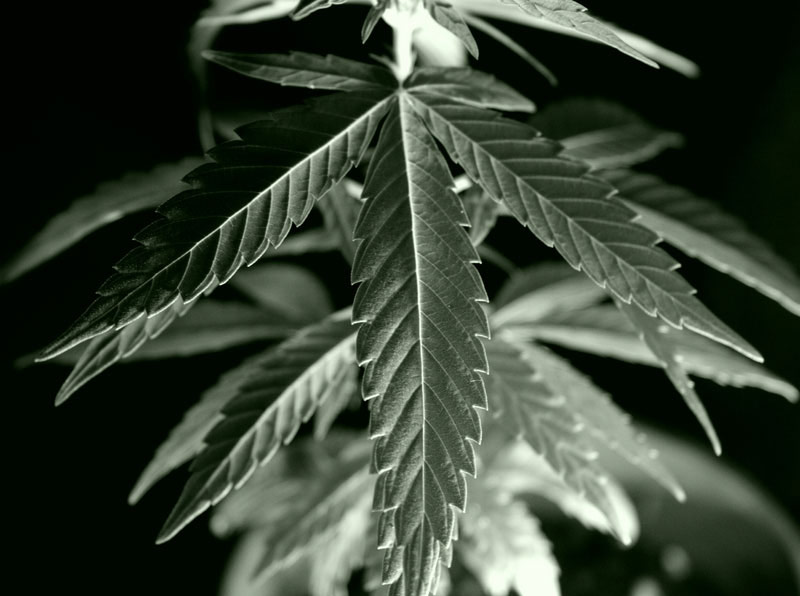Marijuana's New Reality: More Potent, More Risky

If you think marijuana is harmless, you might be suffering from the delusional tendencies caused by smoking pot, as revealed in a health study published in The Lancet on Friday.
The research team, based in England, found that weed smokers have on average a 41 percent increased risk of developing psychotic disorders later in life. The heaviest users doubled their risk; yet even infrequent smokers had a modest increased risk.
The findings imply that smoking marijuana may be the cause of more than 10 percent of schizophrenia cases.
The analysis challenges the myth that ganja is no worse than alcohol and is safe to smoke in moderation. Although "most people who use cannabis will not develop such an illness," according to one of the study's author's, Dr. Stanley Zammit of Cardiff University, he warns that anyone developing mental problems or who has a family history of mental disease should punt the habit.
A separate new study reveals one joint is more damaging to the lungs than five cigarettes. What's more, marijuana today is stronger than it was a few decades ago.
Cause and effect
If you know someone who has smoked too much grass, the new findings might not be surprising. Anecdotally the connection seems obvious. Yet demonstrating scientifically a causal effect between smoking Mary Jane and psychosis has been difficult.
Get the world’s most fascinating discoveries delivered straight to your inbox.
Zammit's group, led by Dr. Glyn Lewis of the University of Bristol, analyzed 35 published cannabis studies and controlled for confounding effects, such as personality traits that might be more of a determinant of psychosis than pot. Indeed, the researchers found that the habit was associated with psychosis—one of many risky behaviors seen among pre-psychotic patients—but it was not a direct cause of the disease in about half of the cases analyzed.
Carefully removing confounding factors, however, the researchers uncovered the first definitive cause-and-effect relationship. Cannabis use appeared to be the primary cause of several psychotic symptoms, from personality changes and disorganized thinking to hallucinations and serious disconnects with reality.
This analysis supports ongoing research at the U.S. National Institute on Drug Abuse (NIDA) showing how cannabis use alters the brain, as well as a report last year in the journal Neurology about how it affects both long- and short-term memory loss. The U.K. team, however, did not uncover a consistent correlation between the marijuana and the risk of depression, suicidal thoughts or anxiety, contrary to smaller, earlier studies.
Didn't inhale
Parents, particularly those who grew up in the 1960s and '70s, often feel hypocritical talking to their children about the dangers of smoking marijuana.
Anti-drug groups, the kind of people you might have always distrusted, have crafted a convenient argument for you: Joints are more dangerous for kids today because the cannabis is more potent. This is actually true.
According to NIDA, marijuana seized in drug arrests during the late 1990s was twice as potent as that seized in the late 1980s and nearly four times as potent as that seized in the 1970s. The active ingredient in pot is THC. On average, the pot on the streets 30 years ago was about 1 percent THC; today the average is about 4 percent.
Pot and potency
There has always been killer weed, such as sinsemilla (just the buds and flowering tops of female plants) and hashish (resin from flowers) with 10 percent or more THC. But most pot in the 1970s was low-quality bunk weed from Mexico. Today most of what's smoked in the United States is grown domestically or in Canada, often hydroponically, where controlled growing methods result in a plant with consistently higher THC levels.
Also, in the 1960s, pot was a college-age thing. Decade by decade, users are starting at an earlier age. Among 12th-graders today, 46 percent have tried marijuana at least once and about 21 percent are current users, according to NIDA.
Health experts debate whether potency makes pot more dangerous, some arguing that smokers smoke until the get high and stop. What is increasing clear, however, through the smoke, is that the habit will have a negative effect on your brain.
Christopher Wanjek is the author of the books “Bad Medicine” and “Food At Work.” Got a question about Bad Medicine? Email Wanjek. If it’s really bad, he just might answer it in a future column. Bad Medicine appears each Tuesday on LiveScience.
- Video: Addiction - It's in Your Genes
- 10 Easy Paths to Self Destruction
- Top 10 Mysterious Diseases

Christopher Wanjek is a Live Science contributor and a health and science writer. He is the author of three science books: Spacefarers (2020), Food at Work (2005) and Bad Medicine (2003). His "Food at Work" book and project, concerning workers' health, safety and productivity, was commissioned by the U.N.'s International Labor Organization. For Live Science, Christopher covers public health, nutrition and biology, and he has written extensively for The Washington Post and Sky & Telescope among others, as well as for the NASA Goddard Space Flight Center, where he was a senior writer. Christopher holds a Master of Health degree from Harvard School of Public Health and a degree in journalism from Temple University.


